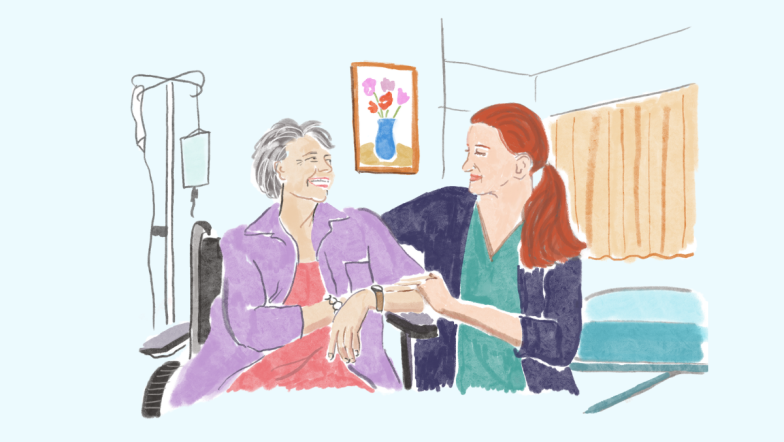Insights from our November COVID-19 response
23 Dec 2020
November marks seven months of collecting and analysing data from our COVID-19 response.
Over this period, we’ve taken an evidence-based and iterative approach, helping us shift the ways we deliver legal help to where it is needed most. We’re continuing to share these insights to help inform and improve the legal services sector’s response to crisis.
Website traffic data in November
While our overall number of page views were down from October, people visited more pages and stayed longer on the website in November than in October. We saw an 8% increase in pages viewed per session and a 24% increase in session duration. This is a good indication that — while we reached fewer people than during Victoria’s second lockdown — the people who found our resources spent more time reading them.

The link between the tightening of restrictions and interest in our resources seems clear. In November, we saw an 8% increase in visits from South Australians (likely linked to the COVID outbreak and consequent restrictions in SA). Whereas in Victoria, where restrictions eased in November, we saw a 29% decrease in traffic from 19,431 visitors to 13,813.
For the first time since we began reporting on this data in April, our resources on emergency powers in New South Wales slipped from our number two to our number six resource. This drop also aligned with the easing of restrictions in the state.

While views to our Victorian emergency powers resource remained high, fewer people sought out information related to COVID-19 restrictions as they eased. Instead, we saw increasing interest in resources related to longer-term impacts of COVID-19, such as debt and housing.
Our resources on sexual harassment and how legally change your name have experienced a steady stream of traffic despite our top 10 resources being skewed towards responding to COVID-19.
Referral pathways
Organic search remained our highest referral pathway, with common searches in November including:
- “sequestration order”
- “how to deal with transphobia”
- “what should employees do if they feel that they have been sexually harassed”
- “examples of sexual harassment”
This collection of search terms reflects the traffic that we received pre-COVID. In addition to the easing of COVID-19 related restrictions and decreasing digital consumer outreach activities, we will continue to take a closer look at this trend in the coming months.
Making improvements to Dear Landlord
In October we reported that an increasing number of people on Dear Landlord were wanting to extend existing rent reduction agreements after the eviction moratorium itself was extended. As a response, we spent November improving the navigation to that pathway in the app.

We have also been working hard to improve our online referral pathways. In November, we saw continued growth in referrals from the Victorian Government’s COVID-19 website with an increase of 290% and Tenants Victoria which increased by 162%.
While traffic remained consistent with the rates we saw in August and September, there is still need for tools like Dear Landlord across the community. An AHURI report released in October 2020 surveyed 15,000 renters. The survey, conducted during July and August 2020, found that “just under 30 per cent” of tenant households had requested or planned to request a rent reduction. Of these, 17% received a deferment (i.e., rental debt), and 30% did not receive a rent reduction. This raises significant issues regarding the number of renters facing rental debts as a result of COVID-19 and the impact of these debts on housing security in 2021.
When renters can avoid financial strain, they avoid the flow-on implications for their housing security. Tools like Dear Landlord — alongside intensive legal and social work support — are key to scaling up our approach and meeting high legal need. We will continue to present Dear Landlord to renters with digital consumer outreach activities.
Evidence from Dear Landlord and our Homeless Law service continues to inform our advocacy with government around the transition from COVID-19 tenancy laws to the Residential Tenancies Act reforms in March. Our goal is to ensure that when the eviction moratorium ends, renters can access the legal and financial supports they need to stay safely housed.
New resources for people struggling with mortgage stress
In November, we released a suite of resources designed to help people respond to mortgage stress caused by the pandemic. We decided to publish these resources based on the evidence we’ve gathered this year. Our data shows that people’s initial experiences of financial insecurity quickly escalate into debt and housing insecurity. While our focus in our COVID-19 has been about preventing renters from facing eviction, we’ve also identified that many people with mortgages are struggling to make ends meet. We describe these people as ‘the missing middle’: they have enough assets that they do not qualify for most free legal services, but they can’t afford to pay for legal help either. Without an adequate social safety net, many people in this cohort can also risk becoming homeless.
To help these cohorts of people understand their rights and act as early as possible, we created a suite of resources for people struggling with debts and mortgage stress. We’ll take an iterative approach and allow the data to inform how we continually improve these resources.

